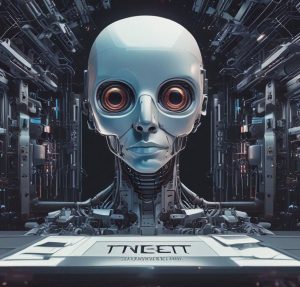
Artificial intelligence has long since moved beyond scientific laboratories and closed-door presentations, intertwining itself into the very fabric of our society. From the way we work and study to the way we communicate and perceive the world around us, AI is changing everything. This transformation is happening at an incredible speed, like a kaleidoscope constantly changing its patterns. In addition to exciting innovations, this rapid development raises difficult questions for humanity about our future, security, and the very essence of intelligence. By the end of 2025/beginning of 2026, this trend will only intensify, with new formats of interaction with technology emerging and autonomous systems becoming even more widespread. In this article, we offer a look at what exactly may change in the world of artificial intelligence in the near future and what innovative solutions we can expect.
Greater emphasis on personalization
AI systems are getting better at understanding individual user needs. For example, modern recommendation algorithms on platforms like YouTube or Netflix have long been adjusting to the tastes of a particular person. This year, such mechanisms are likely to turn into real digital assistants capable of building a detailed user profile. They will learn to track more complex behavioral patterns, including what devices we use, in what conditions we view certain content, or even what mood we hint at during interaction. Based on this, developers will be able to provide more accurate recommendations every time, as well as tips personalized to the current situation. For example, healthy eating tips that change depending on the day’s schedule and location, or mental relaxation exercises adapted to the user’s emotional state.
Autonomous AI agents
Today, autonomous agents that can perform complex tasks without human intervention are no longer a fantasy. For example, the OpenAI “Operator” model is capable of performing operations without human intervention: from filling out forms to scheduling appointments through a web browser. All this is not just the automation of routine processes, but a real replacement of human labor in business. These agents have already started working in some areas. We can predict that in the coming year, there will be many more such technologies, and their efficiency and learning ability will improve significantly.
Ability to analyze in depth
Progress in logical thinking and in-depth analysis has almost reached the point where machines are beginning to effectively “decode” problems that were previously considered too complex for the human mind or required decades of research. This applies not only to medicine, where AI, by analyzing genetic data and clinical trials, accelerates the discovery of new drugs and therapies.
For example, research published in April this year shows that the use of artificial intelligence reduces the time required to identify complex quantum phases in materials from months to minutes.
Berkeley scientists used machine learning to quickly screen nearly 50,000 chemical structures to find a material for film capacitors. The AI technique allowed them to identify three leading candidates in a fraction of the time, and one of them turned out to be a record-breaking performance.
Multimodal models
Over the past year, there has been an amazing progress in multimodal AI models that have learned to work with images and sound simultaneously. These models are now being used to create personalized recommendations, generate media content, and in creative processes. In the near future, these systems will be further improved, and all of this will have a huge impact on such industries as media, advertising, design, and education.
In healthcare
In the medical field, artificial intelligence is making great strides forward, but we will see the biggest changes in the future. One of the latest innovations is the use of AI to diagnose breast cancer, where the Clairity Breast system has shown high efficiency in predicting the risk of developing the disease.
It will take some more time for these technologies to be integrated into clinical practice on a deeper level.
Labor market
Automation with the help of AI will slightly change the labor market. Experts estimate that up to 50% of jobs may be automated in the coming years. No, this doesn’t mean that artificial intelligence will simply steal jobs from you – it will most likely create new opportunities for professions related to the development, training, and management of AI. We will soon see it become an important component of most industries, where people will increasingly work with technology to improve the efficiency of their tasks.
In general, just note that it used to take decades for technologies to go from labs to mass adoption. Now, huge breakthroughs happen in just a matter of months.
Yesterday, we were amazed by chatbots that could answer common questions, and today we interact with systems that are capable of complex dialogues, creativity, and problem solving. What does the year ahead hold in store for us? Is this impressive speed just the culmination of technological progress, or are we on the verge of something radically different – the birth of a new era that will rewrite the very rules of our existence?

